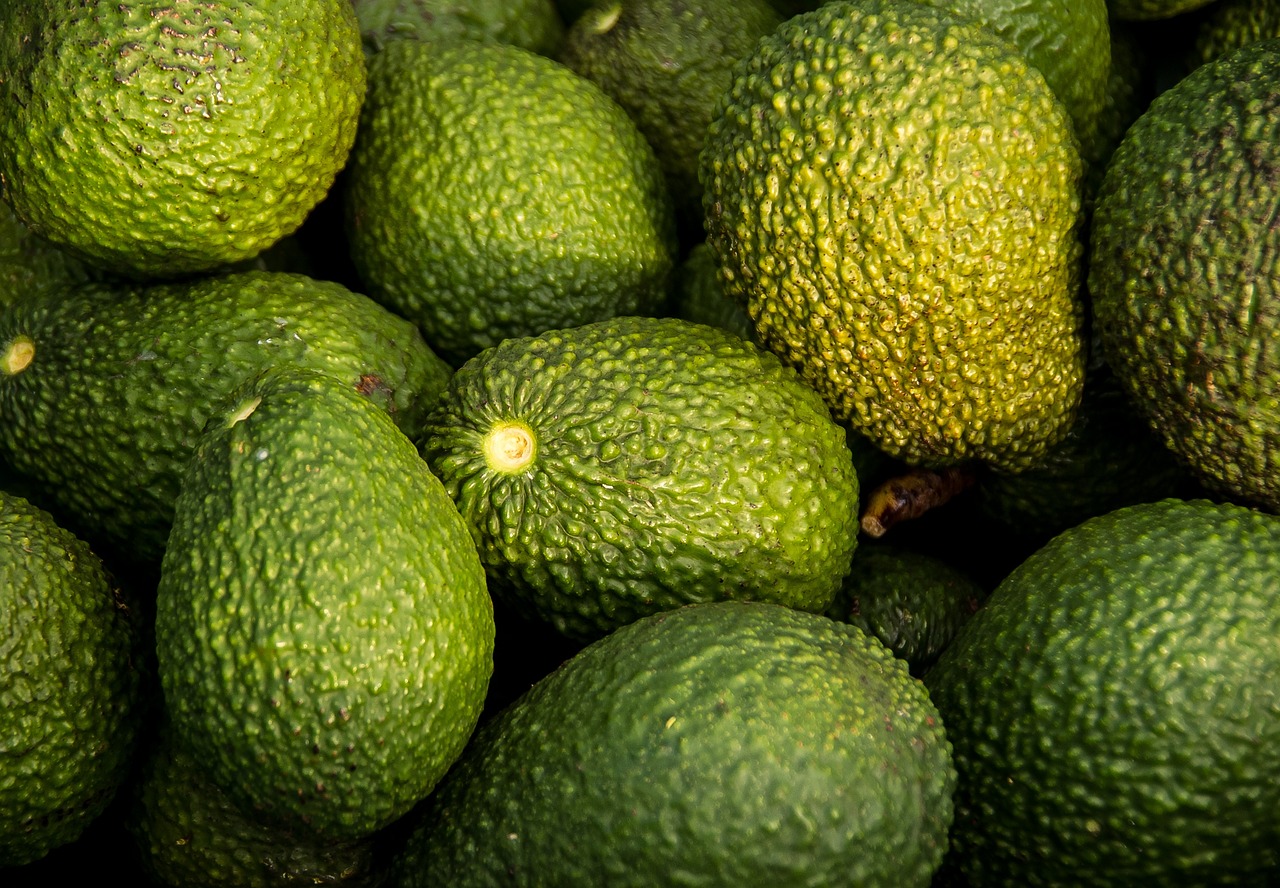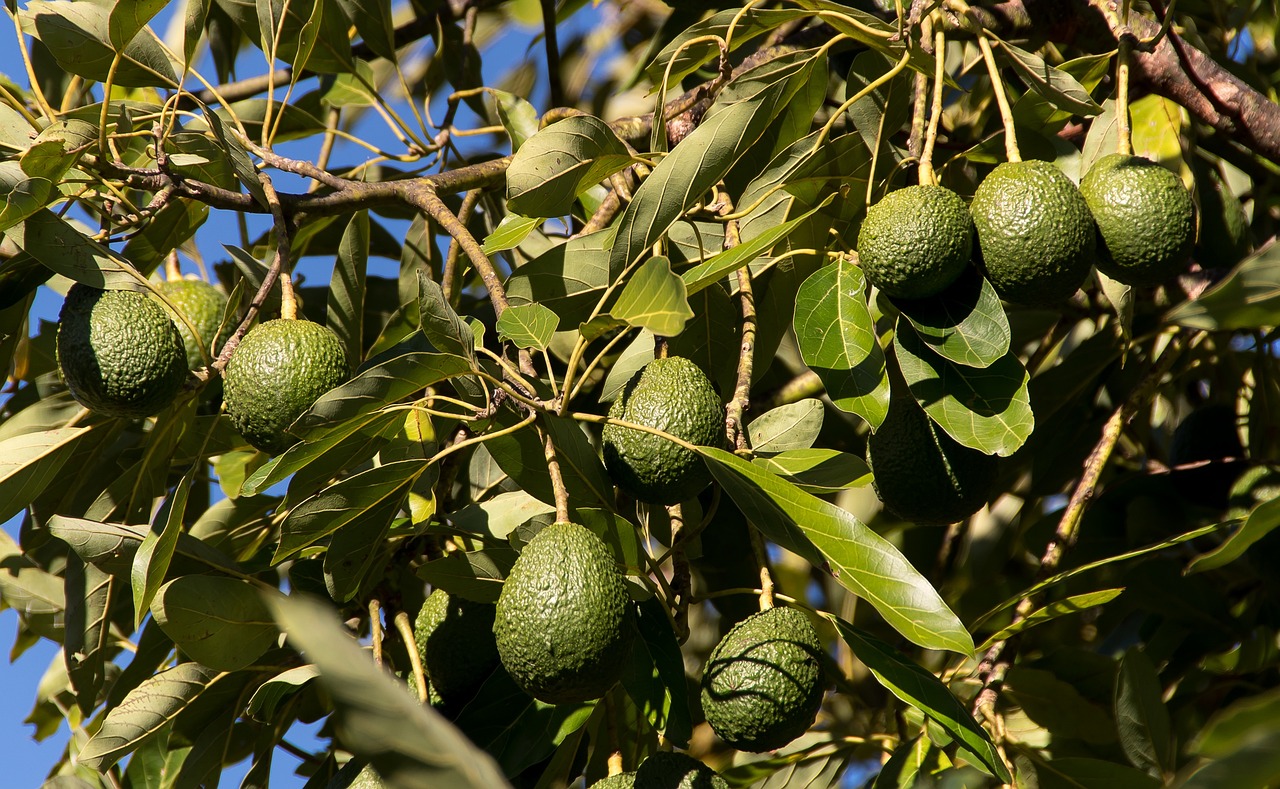Understanding avocado tree growth rates and key care factors is essential for home growers. Proper soil, watering, sunlight, and pest management can significantly boost development. Following proven practices and seasonal guidance ensures healthy trees, earlier fruiting, and a rewarding gardening experience with lush foliage and delicious avocados.
The avocado tree, known scientifically as Persea americana, is a popular choice for home growers due to its delicious fruit and lush foliage. Native to Central America, avocados thrive in warm climates with well-draining soil. Understanding the growth rate of these trees is essential for successful cultivation. Home growers can ensure healthy development by learning about factors that influence growth and how to care for their trees effectively.

There are several avocado varieties, each with unique growth characteristics. Some of the most common include:
- Hass
- Fuerte
- Bacon
- Pinkerton
The growth rate of an avocado tree can be influenced by various environmental factors. These include soil type, temperature, sunlight exposure, and water availability. The following table summarizes these factors and their impact on growth rate:
| Factor | Impact on Growth Rate |
|---|---|
| Soil Type | Well-draining soil promotes faster growth; heavy clay can hinder development. |
| Temperature | Optimal growth occurs in temperatures between 60°F and 85°F. |
| Sunlight Exposure | A minimum of 6 hours of direct sunlight per day is necessary. |
| Water Availability | Consistent moisture encourages healthy growth; avoid overwatering. |
Understanding Avocado Tree Growth Stages
Avocado trees go through several distinct growth stages. Knowing these stages can help home growers provide the right care at each point in development. The main stages include:

- Seedling Stage: After germination, this stage lasts for about 6 months. The tree establishes roots and begins to grow leaves.
- Juvenile Stage: Lasting from 6 months to 2 years, the tree focuses on leaf and root development. Growth is generally slower during this phase.
- Mature Stage: Between 2 and 5 years, the tree starts to produce flowers and, eventually, fruit. Growth rates increase significantly during this period.
- Full Maturity: After about 5 years, the tree reaches full maturity and can produce fruit consistently each year.
The average time for an avocado tree to start producing fruit varies by variety but generally falls within 3 to 4 years after planting. However, optimal care can sometimes accelerate this timeline. Factors such as proper pruning, fertilization, and pest control also contribute to a tree’s overall health and productivity.
In order to maximize growth rates and fruit production, home growers should consider the following best practices:
- Regularly monitor soil moisture levels and adjust watering schedules as needed.
- Apply balanced fertilizers specifically designed for fruit trees during the growing season.
- Prune branches to promote better air circulation and light penetration.
- Protect young trees from extreme weather conditions, such as frost or excessive heat.
By understanding the essentials of avocado tree growth rates, home growers can create an environment that fosters healthy development. This knowledge will lead to more fruitful trees and a rewarding gardening experience.

Pro-Tips and Common Mistakes to Avoid
- When I first started growing avocado trees, I underestimated the importance of soil drainage. I learned the hard way that heavy clay soil can cause root rot, so always ensure your planting site has well-draining soil or amend it with sand and organic matter.
- Early on, I thought watering more would speed up growth, but overwatering led to poor health and root issues. I now monitor soil moisture carefully and adjust watering based on season and soil conditions—remember, consistency without waterlogging is key.
- At first, I neglected pruning, thinking it wasn’t necessary. Big mistake! Proper pruning improves air circulation, light penetration, and encourages better fruit production. I suggest pruning selectively and avoid removing too much in one session.
- Initially, I ignored the importance of sunlight and placed my tree in a shaded spot. Growth was slow, and flowering was sparse. Now, I ensure the tree gets at least 6 hours of direct sunlight daily for optimal results.
- When I first tried growing avocado from seed, I waited too long to transplant and handled it improperly. For best results, I recommend grafting or buying a young grafted tree to speed up fruit production and ensure desirable fruit qualities.
- I used generic fertilizer without understanding the tree’s needs, which sometimes caused nutrient imbalances. Now, I select balanced fertilizers formulated for fruit trees and apply them at the right times—spring and mid-summer—for best growth and yield.
- In my early days, I didn’t pay attention to pest signs early enough. Regular inspections and early intervention with natural or chemical controls prevent minor issues from becoming severe.
- Lastly, I used to ignore winter protection for young trees, risking cold damage. Now, I cover young plants or bring potted ones indoors during cold snaps to ensure they survive dormancy and rebound in spring.
Factors Affecting Avocado Tree Growth Rate
Several key factors can significantly influence the growth rate of avocado trees. Understanding these factors allows home growers to create optimal conditions for their trees. The following sections will delve into the most critical elements affecting growth.
Soil Quality and Composition
The quality of the soil plays a crucial role in the growth of avocado trees. These trees prefer well-draining, sandy or loamy soils with a pH level between 6 and 7. Poorly draining soil can lead to root rot and hinder growth. Home growers should consider the following soil characteristics:
- Drainage: Ensure the soil drains well to prevent waterlogging.
- Nutrient Content: Rich soil with organic matter supports healthy growth.
- pH Level: Test and amend soil pH if necessary to maintain optimal levels.
Watering Practices
Watering is another essential factor in promoting healthy avocado tree growth. Avocado trees require consistent moisture but are susceptible to overwatering. The following guidelines can help manage watering effectively:

- Frequency: Water young trees more frequently, while mature trees need less frequent watering.
- Depth: Ensure water reaches 2 to 3 feet deep to encourage deeper root growth.
- Seasonal Adjustments: Reduce watering during cooler months when growth slows.
Sunlight Exposure
Avocado trees thrive best with plenty of sunlight. A minimum of 6 hours of direct sunlight each day is crucial for optimal growth and fruit production. Factors to consider regarding sunlight include:
- Location: Choose a planting site that receives full sun exposure.
- Shade Management: Trim back nearby plants or trees that may cast shade on the avocado tree.
- Temperature Considerations: Protect trees from extreme temperatures by planting in microclimates if necessary.
Pest and Disease Management
Keeping avocado trees healthy requires vigilance against pests and diseases. Common threats include aphids, spider mites, and root rot. Home growers should adopt proactive measures to protect their trees:
Identifying Common Pests
Recognizing pests early can prevent damage and promote healthy growth. Some common pests include:
- Aphids: Small insects that can weaken trees by sucking sap.
- Spider Mites: Tiny arachnids that thrive in dry conditions, causing leaf discoloration.
- Scale Insects: These pests can cover branches and leaves, impeding photosynthesis.
Disease Prevention
Disease management is also vital for maintaining healthy avocado trees. Root rot, caused by overwatering or poor drainage, is a significant concern. Key prevention strategies include:
- Proper Watering Techniques: Avoid overwatering and ensure well-draining soil.
- Regular Inspections: Check for signs of disease or infestation regularly.
- Fungicides: Use fungicides if necessary to treat fungal infections.
The Role of Fertilization
Nutritional needs vary throughout the growing season. Understanding how to fertilize avocado trees effectively can enhance their growth and fruit production. Here are some essential points regarding fertilization:
Choosing the Right Fertilizer
Select a balanced fertilizer specifically formulated for fruit trees. The following nutrients are particularly important:
- Nitrogen: Promotes healthy foliage and overall growth.
- Phosphorus: Essential for root development and flowering.
- Potassium: Supports fruit quality and tree resilience.
Timing and Application
Applying fertilizer at the right time is crucial for maximizing growth. Follow these guidelines for effective fertilization:
- Early Spring Application: Fertilize as new growth begins in spring.
- Mid-Summer Boost: A second application in mid-summer can support ongoing development.
- Avoid Late Season Fertilization: Refrain from fertilizing in late fall to prevent new growth before winter.
By focusing on these critical factors, home growers can significantly enhance the growth rate of their avocado trees, leading to healthier plants and more abundant fruit production.
Seasonal Growth Patterns of Avocado Trees
The growth of avocado trees is not uniform throughout the year. Understanding their seasonal growth patterns can help home growers provide proper care and optimize growth. Avocado trees experience distinct phases during spring, summer, fall, and winter.
Spring Growth
Spring is a critical time for avocado trees as they come out of dormancy. During this season, you can expect:
- New Leaf Development: Fresh leaves emerge, indicating active growth.
- Flowering: Many avocado trees will begin to produce flowers, which are essential for fruit set.
- Root Expansion: Roots continue to grow, seeking moisture and nutrients.
To support growth in spring, consider applying a balanced fertilizer as new growth begins. Regular watering is also vital to help the tree establish itself after winter.
Summer Growth
Summer is generally the most active growing season for avocado trees. During this time:
- Fruit Development: If pollination occurs successfully, fruit begins to form.
- Increased Water Needs: The tree requires more water due to higher temperatures and evapotranspiration rates.
- Pest Vigilance: Keep an eye out for pests that may thrive in warm weather.
Summer is also an excellent time for a second application of fertilizer to support both leaf and fruit development. Ensure the tree receives adequate water to promote healthy fruit growth.
Fall Growth
As summer transitions into fall, avocado trees prepare for the cooler months. During this season:
- Ripening Fruit: Harvesting typically occurs in fall for many varieties.
- Leaf Drop: Some trees may begin to drop older leaves as new foliage matures.
- Reduced Growth Rate: The rate of growth slows as temperatures decrease.
During fall, it is important to reduce watering as the tree enters a semi-dormant state. Additionally, avoid fertilizing late in the season to prevent promoting new growth that may be damaged by cold temperatures.
winter Dormancy
Winter marks a period of dormancy for avocado trees. While they do not grow actively during this time, they still require care. Key points include:
- Minimal Watering: Water less frequently since the tree’s water needs decrease significantly.
- Protection from Cold: If temperatures drop significantly, consider covering younger trees or moving potted plants indoors.
- Pest Monitoring: Although pests are less active, periodic inspections are still important.
This period allows the tree to conserve energy and prepare for the next growing season. Proper care during winter can enhance growth when spring arrives.
Common Challenges in Growing Avocado Trees
Growing avocado trees can come with its own set of challenges. Awareness of these issues can help home growers take preventative measures and respond effectively to any problems that arise.
Pest Infestations
Pests can significantly affect the growth and health of avocado trees. Common pests include:
- Aphids: These small insects can cause leaf curling and weaken the tree by sucking sap.
- Caterpillars: They can feed on leaves and fruit, leading to damage.
- Whiteflies: These pests can lead to sooty mold and weaken tree vigor.
Diseases
Disease management is crucial for maintaining the health of avocado trees. Some common diseases include:
- Root Rot: Caused by overwatering or poor drainage, leading to root decay.
- Powdery Mildew: A fungal infection that can appear on leaves, impacting photosynthesis.
- Crown Rot: Affects the base of the tree, often caused by excessive moisture.
Nutritional Deficiencies
Nutritional imbalances can hinder growth and fruit production. Common deficiencies include:
- Nitrogen Deficiency: Leads to yellowing leaves and stunted growth.
- Iron Deficiency: Causes chlorosis, particularly in younger leaves.
- Zinc Deficiency: Results in leaf distortion and reduced fruit yield.
By understanding these potential challenges and their symptoms, home growers can implement effective management strategies to ensure their avocado trees remain healthy and productive throughout their growth cycle.
Advanced Care Techniques for Avocado Trees
In addition to the basic care practices discussed, advanced techniques can further enhance the growth and health of avocado trees. These methods focus on optimizing the environment and utilizing innovative strategies to achieve better yields.
Grafting Techniques
Grafting is a horticultural technique that can be beneficial for avocado growers. This process involves joining two plants together so they grow as one. Grafting can improve disease resistance and fruit quality. The following points highlight the advantages of grafting:
- Faster Fruit Production: Grafted trees often produce fruit more quickly than those grown from seed.
- Varietal Characteristics: Growers can combine desirable traits from different avocado varieties.
- Disease Resistance: Grafting onto rootstocks that are resistant to certain diseases can protect the tree.
Companion Planting
Companion planting involves growing different plants in proximity to enhance growth and deter pests. For avocado trees, the following companion plants can be beneficial:
- Nasturtiums: These flowers attract beneficial insects while deterring aphids.
- Legumes: Plants like clover fix nitrogen in the soil, enriching it for the avocado tree.
- Marigolds: Known for their pest-repelling properties, marigolds can help protect your avocado tree.
Mulching
Applying mulch around the base of avocado trees can provide numerous benefits. Mulch helps retain soil moisture, suppress weeds, and regulate soil temperature. Effective mulching practices include:
- Organic Materials: Use shredded bark, wood chips, or straw to create a natural mulch layer.
- Thickness: Aim for a layer of 2 to 4 inches to maximize effectiveness without suffocating the roots.
- Avoiding Piling: Do not pile mulch against the trunk to prevent rot.
Common Myths About Avocado Tree Growth
As with many gardening practices, myths about avocado tree growth can lead to misunderstandings. Debunking these myths helps home growers make informed decisions:
Myth: Avocado Trees Can Be Grown in Any Type of Soil
This myth is misleading. While avocado trees can adapt to various soil types, they thrive best in well-draining, sandy or loamy soils. Heavy clay soils can cause root rot and affect overall growth.
Myth: Avocado Trees Don’t Need Pruning
Pruning is essential for maintaining tree health and promoting fruit production. Regular pruning encourages better air circulation and light penetration, leading to healthier growth.
Myth: All Avocado Trees Are Self-Pollinating
While some avocado varieties can self-pollinate, many benefit from cross-pollination. Planting multiple varieties can increase fruit set and yield.
Final Thoughts
Cultivating avocado trees requires a combination of knowledge, patience, and dedication. By understanding their growth rates and the factors that influence them, home growers can create an environment conducive to healthy development. Key takeaways include the importance of soil quality, watering practices, sunlight exposure, and pest management.
The seasonal growth patterns highlight the need for tailored care throughout the year, ensuring that each stage of growth receives the appropriate attention. Advanced techniques such as grafting and companion planting can further enhance growth and productivity.
By being aware of common myths and challenges, home growers can avoid pitfalls that may hinder their success. With proper care and attention, avocado trees can thrive, providing both beauty and delicious fruit for years to come. Embrace the journey of growing avocado trees, and enjoy the rewarding experience of nurturing these remarkable plants.
